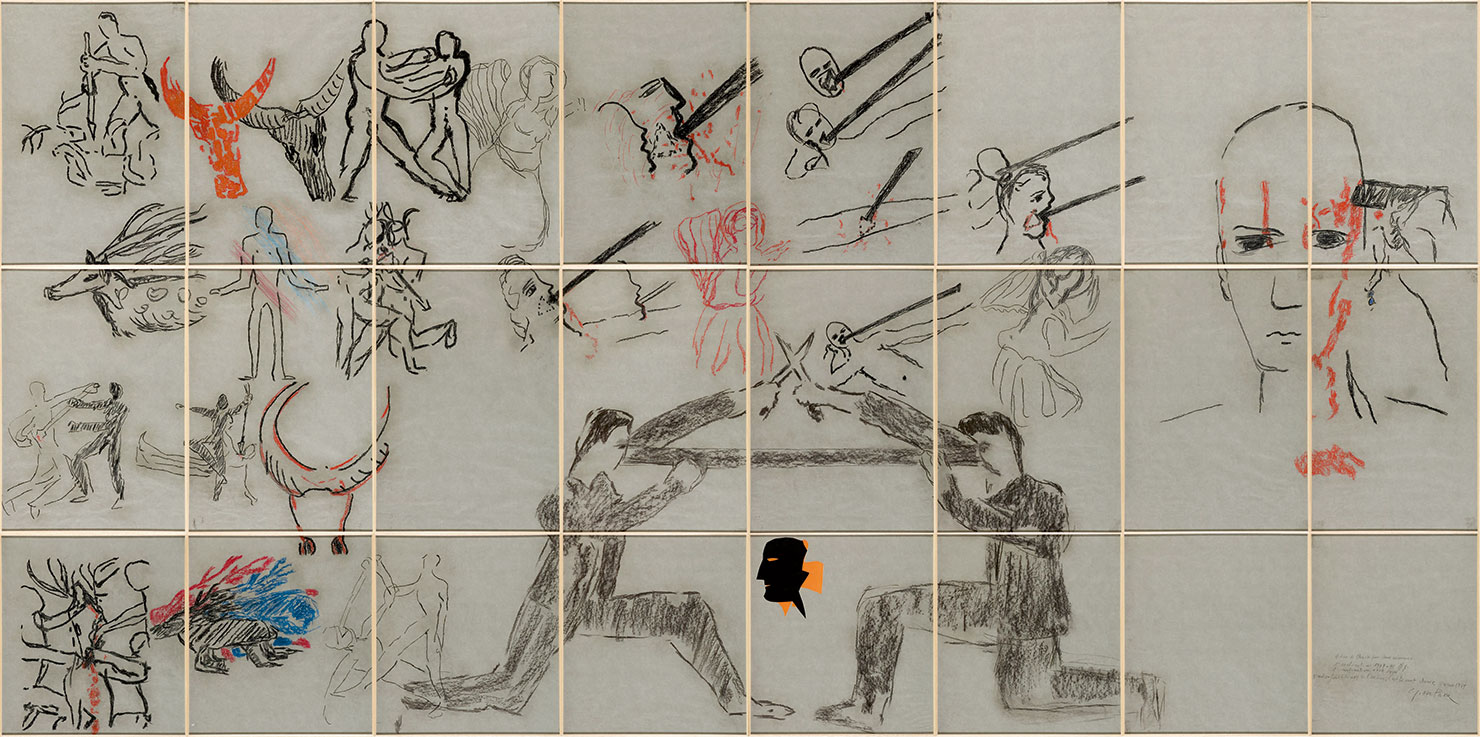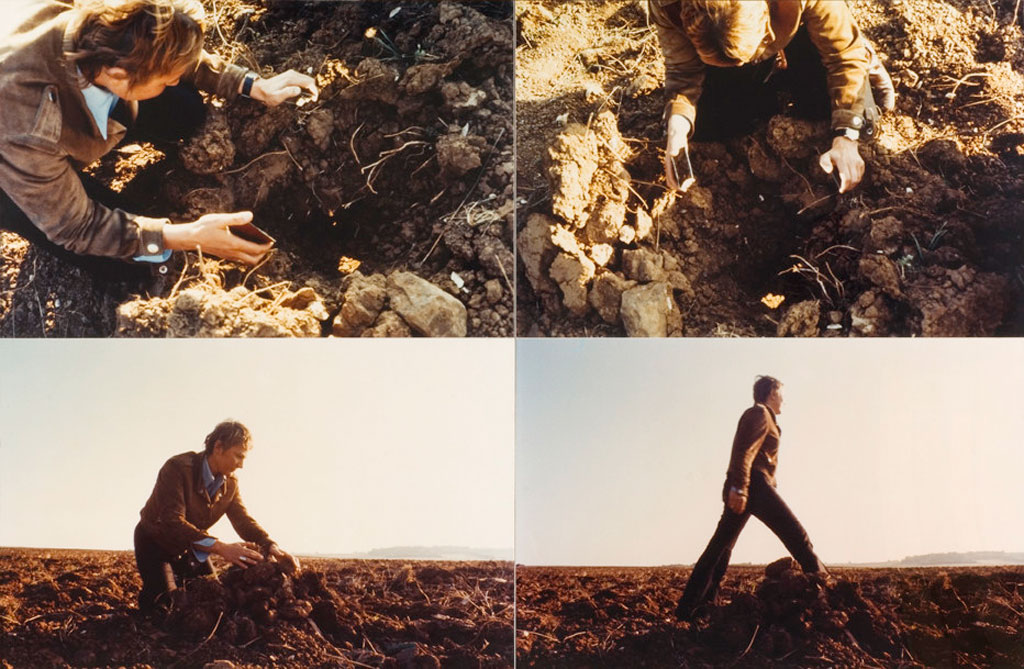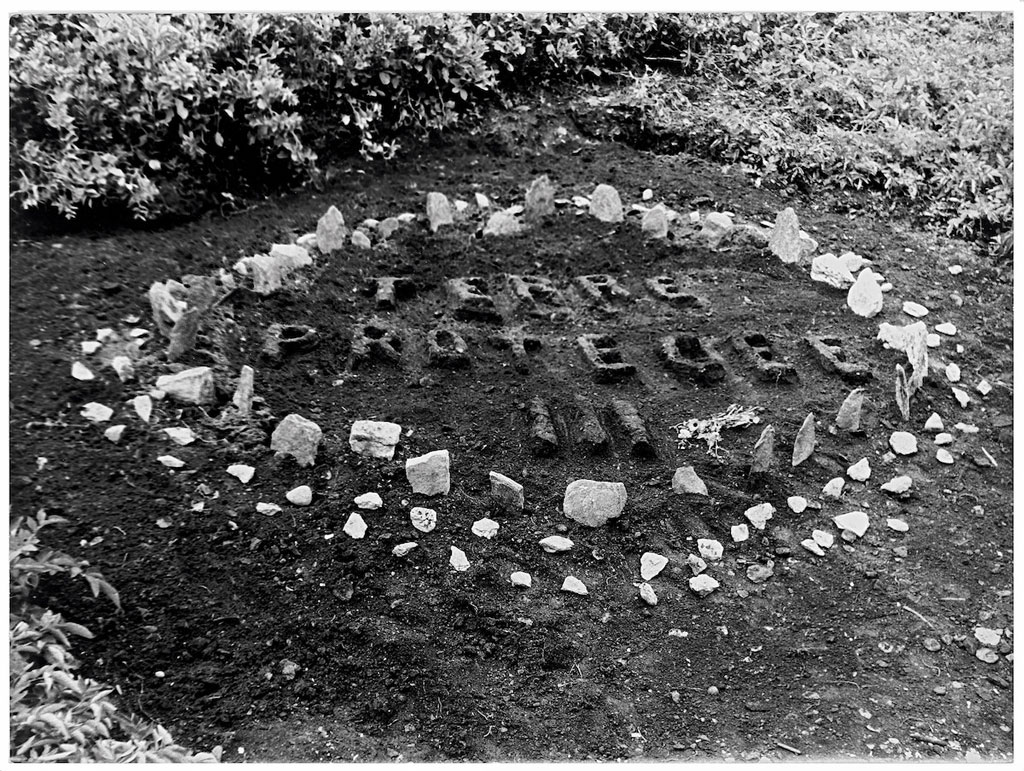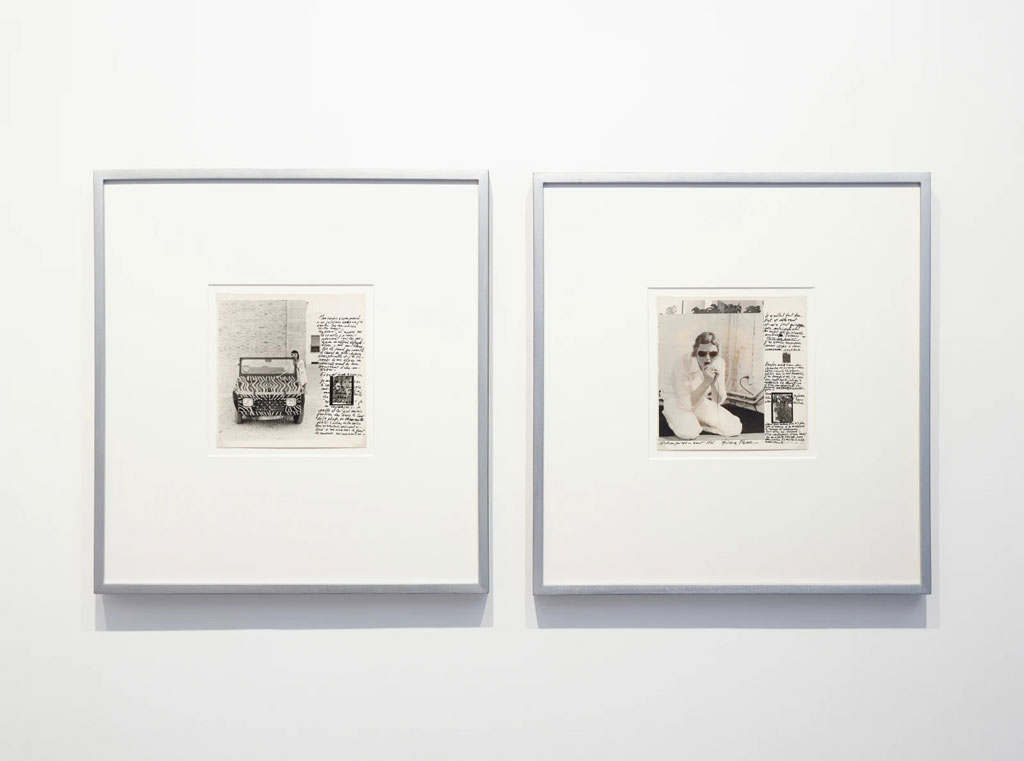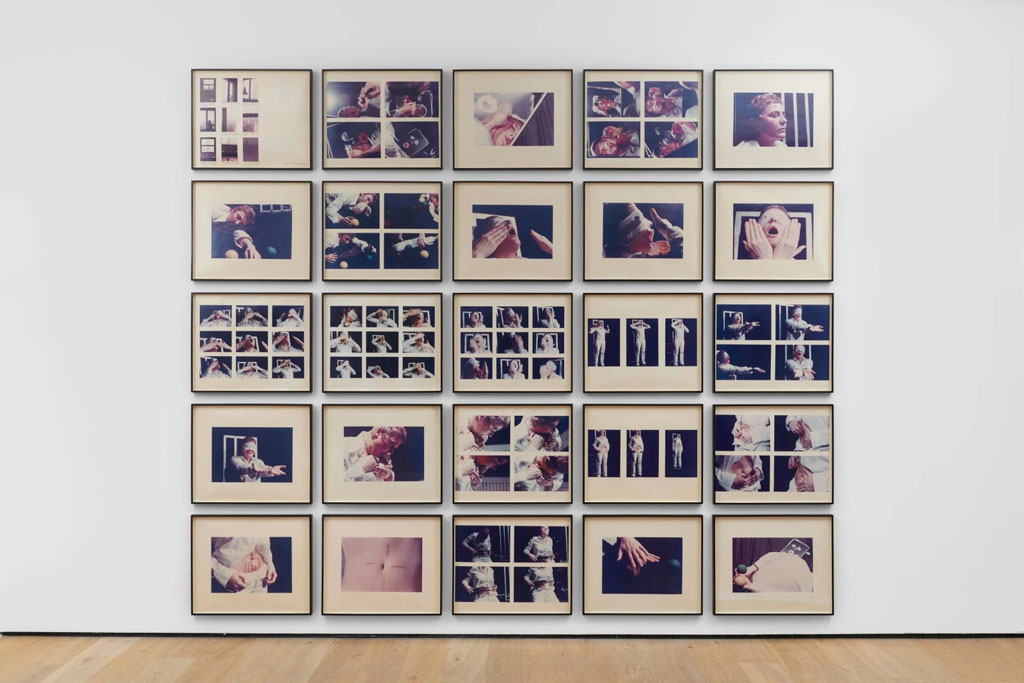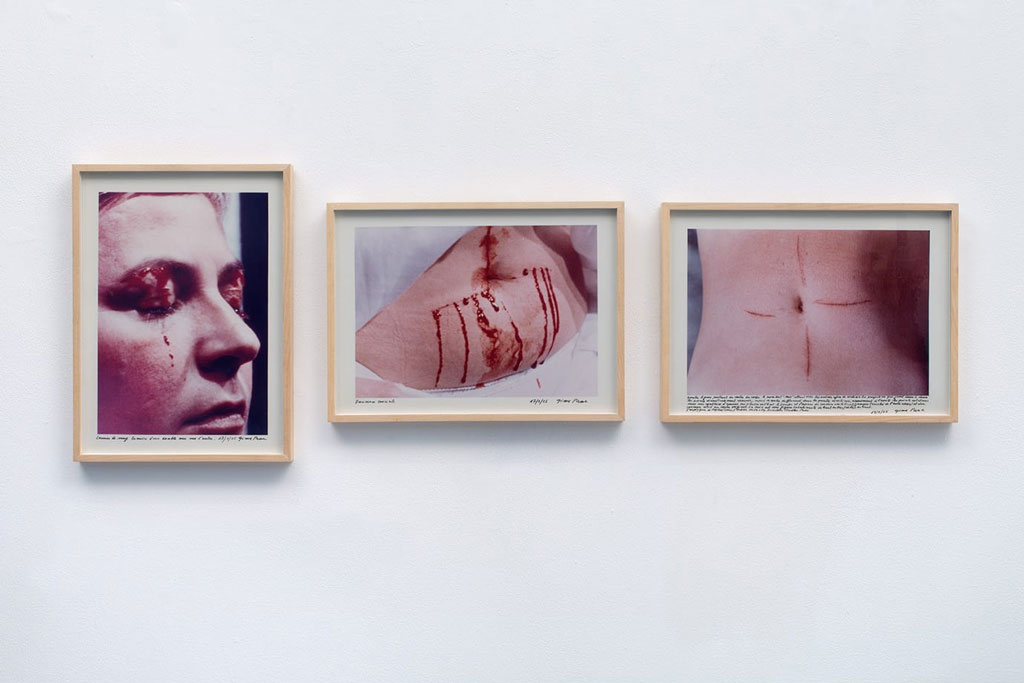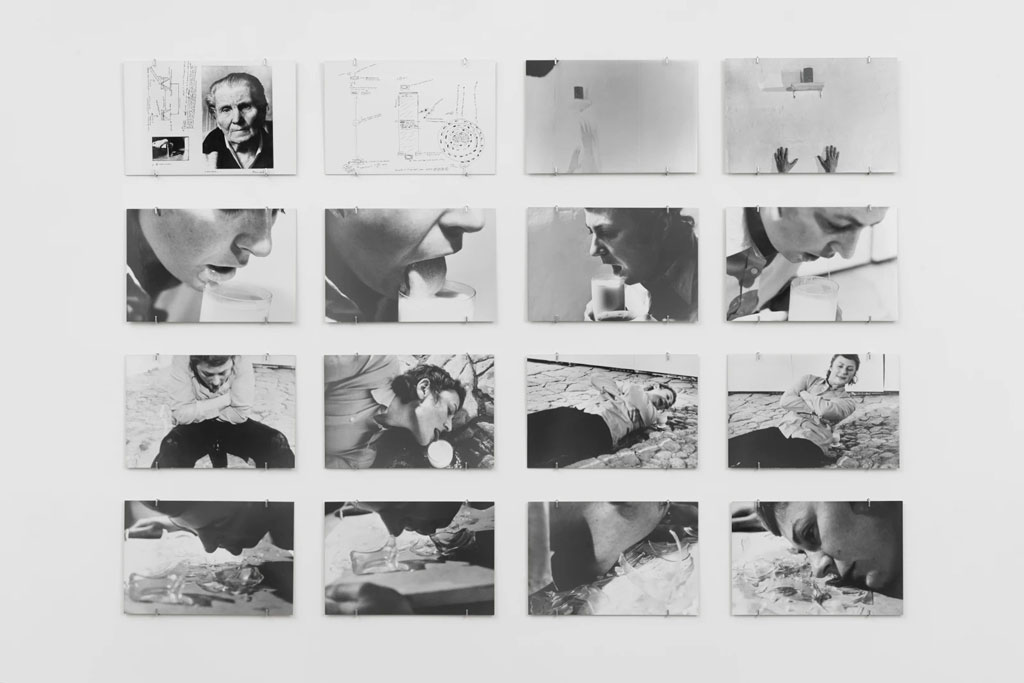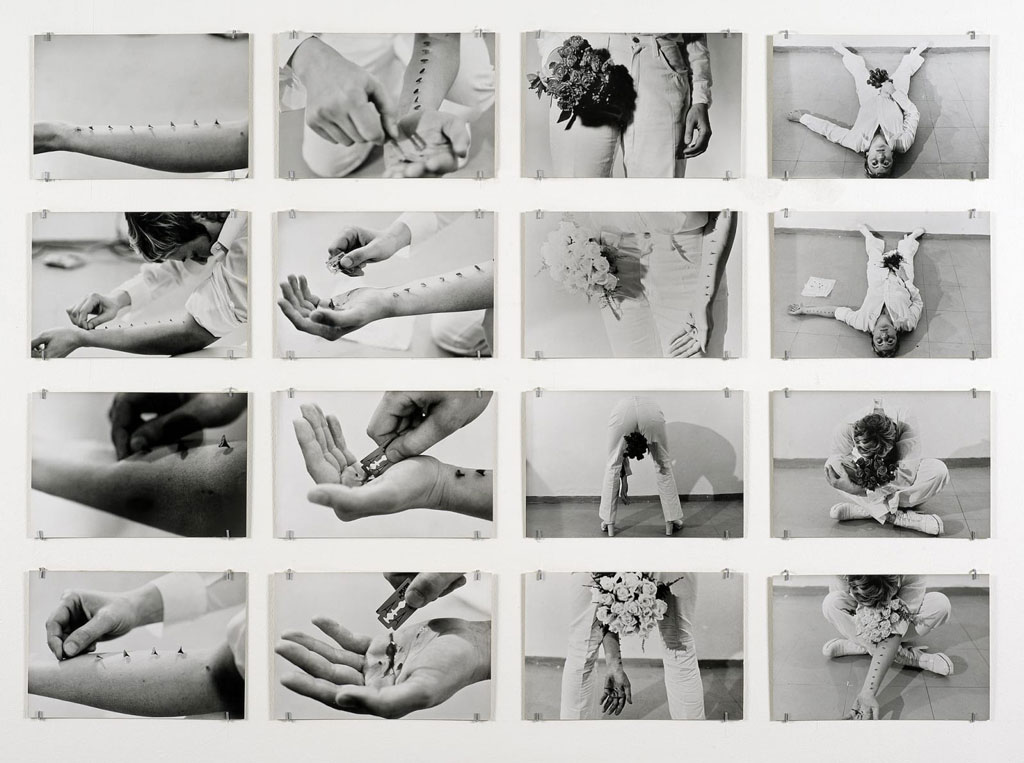TRACES: Gina Pane
 Today is the occasion to bear in mind Gina Pane (24/5/1939-6/3/1990), a seminal figure in the history of Body Art and more generally in that of the arts scene in France during the ‘70s and’80s. Gina Pane made a deep impression on the art world of the 1970s with a series of “actions” carrying a deep symbolic charge. The emotions and reactions of rejection provoked by the wounds she used to inflict upon herself with a razor blade, in which the body was offered as a mirror to the “anaesthetised” spectator, and the blood as life-bearing gift have, despite herself, contributed to the artist being identified with the experience of Body Art alone. Through documents or interviews, starting with: moments and memories, we reveal out from the past-unknown sides of big personalities, who left their indelible traces in time and history…
Today is the occasion to bear in mind Gina Pane (24/5/1939-6/3/1990), a seminal figure in the history of Body Art and more generally in that of the arts scene in France during the ‘70s and’80s. Gina Pane made a deep impression on the art world of the 1970s with a series of “actions” carrying a deep symbolic charge. The emotions and reactions of rejection provoked by the wounds she used to inflict upon herself with a razor blade, in which the body was offered as a mirror to the “anaesthetised” spectator, and the blood as life-bearing gift have, despite herself, contributed to the artist being identified with the experience of Body Art alone. Through documents or interviews, starting with: moments and memories, we reveal out from the past-unknown sides of big personalities, who left their indelible traces in time and history…
By Dimitris Lempesis
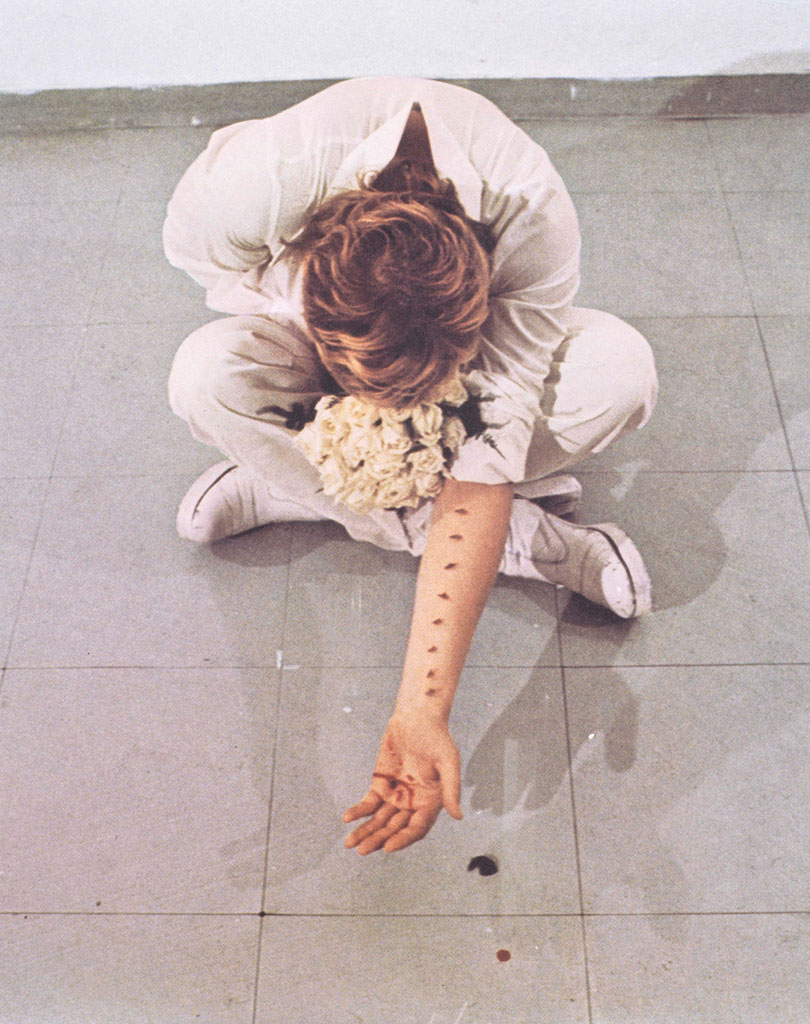 Gina Pane was born in Biarritz, France in 1939 to an Italian father and an Austrian mother. She spent most of her youth in Italy and grew up speaking both Italian and French. In 1961 Pane moved to Paris to attend the École nationale supérieure des Beaux-Arts, she took courses in sacred art with Edmée Larnaudie and in lithography. She also spent time working at Atelier d’Art sacré, an organization that paired artists to execute projects for civic and religious buildings. It was a key training ground for female artists in particular. Though she would be most famous for her performance art pieces, Pane explored painting, sculpture, and land-based art. Pane’s paintings were mostly geometric, hard-edged abstractions although she admitted being deeply moved by the work of Vincent van Gogh. Pane’s early three-dimensional works were, a series of welded metal sculptures that were uniformly coated with sprayed-on layers of vibrantly colored enamel paint. The palette for these works included primary red, white, vibrant greens, and oceanic blues. While sculptural elements remained a part of her oeuvre to an extent, Pane’s interest in painting was relatively short-lived; in 1969 she threw four pieces into the Chisone river in Perosa Argentina, Italy so they’d eventually reach the sea, stating that this ritual abandonment of the medium was “a reasonable, boring, self-critical act”. In the late 1960s Pane was deeply troubled by the conservatism of the French government and the increasing violence and trauma of the Vietnam War. During May 1968, a volatile period of unrest unfurled itself in France punctuated by demonstrations and major general strikes as well as the occupation of universities and factories across the country. At its height, it brought the economy of France almost to a halt. Instead of explicit political or social activism, Pane sought to convey her disillusionment and frustration through her art. From the years 1969-1979 she began turning to her own body as a way to express her concerns. She is best known for her “azioni” in which she used her body as material in order to comment on politics, gender, love, and the role of art. “Pierres déplacées” of 1968 was Gina Pane’s first intervention in nature. The artist moves some stones so that they are struck by the sun’s rays, thus almost imperceptibly changing the evolution of things and instigating a dialogue with the natural elements. In “Terre protégée I, II and III” of 1968-70, the artist highlights the nutritive aspect of the earth and the symbiotic bond existing between and nature. During the same period, she produced “Solitrac” (1968), her only film. The film, rarely presented, evokes and anguish and panic of solitude and contains valuable keys to understanding Gina Pane’s œuvre as a whole. In one of her few artist’s statements, “Before May 1968” (most of her writing consists not of statements but of the notes and documentation for her performances), she explained that “the confrontation of mine with the post-1968 public benefitted from a relationship I could describe as ‘Active’ and my work was not only looked at, but lived.” She also stated in a letter, “my language is that of the body since 1968”. Pane was openly homosexual and a feminist, and was open about the various ways in which a patriarchal and hetero-normative culture and discourse circumscribed the bodies and minds of those outside its rigid structure. She was in a relationship with Anne Marchand, who worked closely with her on preparing and documenting her performances. Blood was featured prominently in them and the photographic documentation of these works was highly detailed. In her historical performances, always devised through careful preparation, Pane acted directly on her body, subjecting it to tests of resistance and minor injuries. Breakage, injury, were the artist’s only path of access to the Other: “Injury is a sign of the state of extreme frailty of the body, a sign of pain, a sign that reveals the situation of external aggression, of violence, to which we are exposed”. Addressed to an exclusively female audience, in her famous “Azione Sentimentale” (1973) the rose thorns stuck in Pane’s forearms and the stigmata self-inflicted with a razorblade became symbols of a female condition analyzed in its most intimate and universal parts. “Azione Teorica” ( 1977) was the second performance the artist presented in the space of the Studio Morra – the first “Azione Melanconica 2x2x2” dates from 1974, and was linked thematically to “Azione Sentimentale”: “My problem is to establish a language through this wound that becomes a sign. “Another important point for me it is to convey the loss of energy through the wound. And in this context, physical suffering is not only a personal problem but a problem of language. […] I use metaphor, narrative time, malleable and imaginative. Building an action starts with the concept of a space-form, colored signs, a wound, objects” declared the artist. “Psyché” presented by Gina Pane in 1974, is the most visionary of all the artist’s actions. It is described in notes, sketches, preparatory drawings and photographs, making it possible to trace its genesis, from the first notes about the project to the definitive title, “Action Psyché (Essai)”. The suffering “for the love of you” returns: this time with self-inflicted wounds above the eyelashes, simulating tears of blood, and above all with the cross-shaped incision on her belly, close to her navel. Like other works she produced in the same year, “Azione Teorica” sought to bring out the frailty and yet the vital energy, the spirit grasped in the materiality of the body, which dissents from the image of individual forged by society to reappropriate it controversially, through a process that the artist stages in public, carving it into her own flesh. In the early 1980s she produced “Partitions”, in which the body was replaced by its metaphor, celebrating its absence: a production that accompanied Pane until her untimely death in 1990, and whose subjects were often the martyrs, drawn from various sources including art history. Besides the signs of a contemporary martyrology, the artist created a veritable “sacred” art, an expression of contemporary spirituality, secular and meta-historical. Until her death her work would be mixed media, combing aspects of painting, sculpture, and photography. In the last years of Pane’s life she suffered from cancer, and died in 1990.
Gina Pane was born in Biarritz, France in 1939 to an Italian father and an Austrian mother. She spent most of her youth in Italy and grew up speaking both Italian and French. In 1961 Pane moved to Paris to attend the École nationale supérieure des Beaux-Arts, she took courses in sacred art with Edmée Larnaudie and in lithography. She also spent time working at Atelier d’Art sacré, an organization that paired artists to execute projects for civic and religious buildings. It was a key training ground for female artists in particular. Though she would be most famous for her performance art pieces, Pane explored painting, sculpture, and land-based art. Pane’s paintings were mostly geometric, hard-edged abstractions although she admitted being deeply moved by the work of Vincent van Gogh. Pane’s early three-dimensional works were, a series of welded metal sculptures that were uniformly coated with sprayed-on layers of vibrantly colored enamel paint. The palette for these works included primary red, white, vibrant greens, and oceanic blues. While sculptural elements remained a part of her oeuvre to an extent, Pane’s interest in painting was relatively short-lived; in 1969 she threw four pieces into the Chisone river in Perosa Argentina, Italy so they’d eventually reach the sea, stating that this ritual abandonment of the medium was “a reasonable, boring, self-critical act”. In the late 1960s Pane was deeply troubled by the conservatism of the French government and the increasing violence and trauma of the Vietnam War. During May 1968, a volatile period of unrest unfurled itself in France punctuated by demonstrations and major general strikes as well as the occupation of universities and factories across the country. At its height, it brought the economy of France almost to a halt. Instead of explicit political or social activism, Pane sought to convey her disillusionment and frustration through her art. From the years 1969-1979 she began turning to her own body as a way to express her concerns. She is best known for her “azioni” in which she used her body as material in order to comment on politics, gender, love, and the role of art. “Pierres déplacées” of 1968 was Gina Pane’s first intervention in nature. The artist moves some stones so that they are struck by the sun’s rays, thus almost imperceptibly changing the evolution of things and instigating a dialogue with the natural elements. In “Terre protégée I, II and III” of 1968-70, the artist highlights the nutritive aspect of the earth and the symbiotic bond existing between and nature. During the same period, she produced “Solitrac” (1968), her only film. The film, rarely presented, evokes and anguish and panic of solitude and contains valuable keys to understanding Gina Pane’s œuvre as a whole. In one of her few artist’s statements, “Before May 1968” (most of her writing consists not of statements but of the notes and documentation for her performances), she explained that “the confrontation of mine with the post-1968 public benefitted from a relationship I could describe as ‘Active’ and my work was not only looked at, but lived.” She also stated in a letter, “my language is that of the body since 1968”. Pane was openly homosexual and a feminist, and was open about the various ways in which a patriarchal and hetero-normative culture and discourse circumscribed the bodies and minds of those outside its rigid structure. She was in a relationship with Anne Marchand, who worked closely with her on preparing and documenting her performances. Blood was featured prominently in them and the photographic documentation of these works was highly detailed. In her historical performances, always devised through careful preparation, Pane acted directly on her body, subjecting it to tests of resistance and minor injuries. Breakage, injury, were the artist’s only path of access to the Other: “Injury is a sign of the state of extreme frailty of the body, a sign of pain, a sign that reveals the situation of external aggression, of violence, to which we are exposed”. Addressed to an exclusively female audience, in her famous “Azione Sentimentale” (1973) the rose thorns stuck in Pane’s forearms and the stigmata self-inflicted with a razorblade became symbols of a female condition analyzed in its most intimate and universal parts. “Azione Teorica” ( 1977) was the second performance the artist presented in the space of the Studio Morra – the first “Azione Melanconica 2x2x2” dates from 1974, and was linked thematically to “Azione Sentimentale”: “My problem is to establish a language through this wound that becomes a sign. “Another important point for me it is to convey the loss of energy through the wound. And in this context, physical suffering is not only a personal problem but a problem of language. […] I use metaphor, narrative time, malleable and imaginative. Building an action starts with the concept of a space-form, colored signs, a wound, objects” declared the artist. “Psyché” presented by Gina Pane in 1974, is the most visionary of all the artist’s actions. It is described in notes, sketches, preparatory drawings and photographs, making it possible to trace its genesis, from the first notes about the project to the definitive title, “Action Psyché (Essai)”. The suffering “for the love of you” returns: this time with self-inflicted wounds above the eyelashes, simulating tears of blood, and above all with the cross-shaped incision on her belly, close to her navel. Like other works she produced in the same year, “Azione Teorica” sought to bring out the frailty and yet the vital energy, the spirit grasped in the materiality of the body, which dissents from the image of individual forged by society to reappropriate it controversially, through a process that the artist stages in public, carving it into her own flesh. In the early 1980s she produced “Partitions”, in which the body was replaced by its metaphor, celebrating its absence: a production that accompanied Pane until her untimely death in 1990, and whose subjects were often the martyrs, drawn from various sources including art history. Besides the signs of a contemporary martyrology, the artist created a veritable “sacred” art, an expression of contemporary spirituality, secular and meta-historical. Until her death her work would be mixed media, combing aspects of painting, sculpture, and photography. In the last years of Pane’s life she suffered from cancer, and died in 1990.

